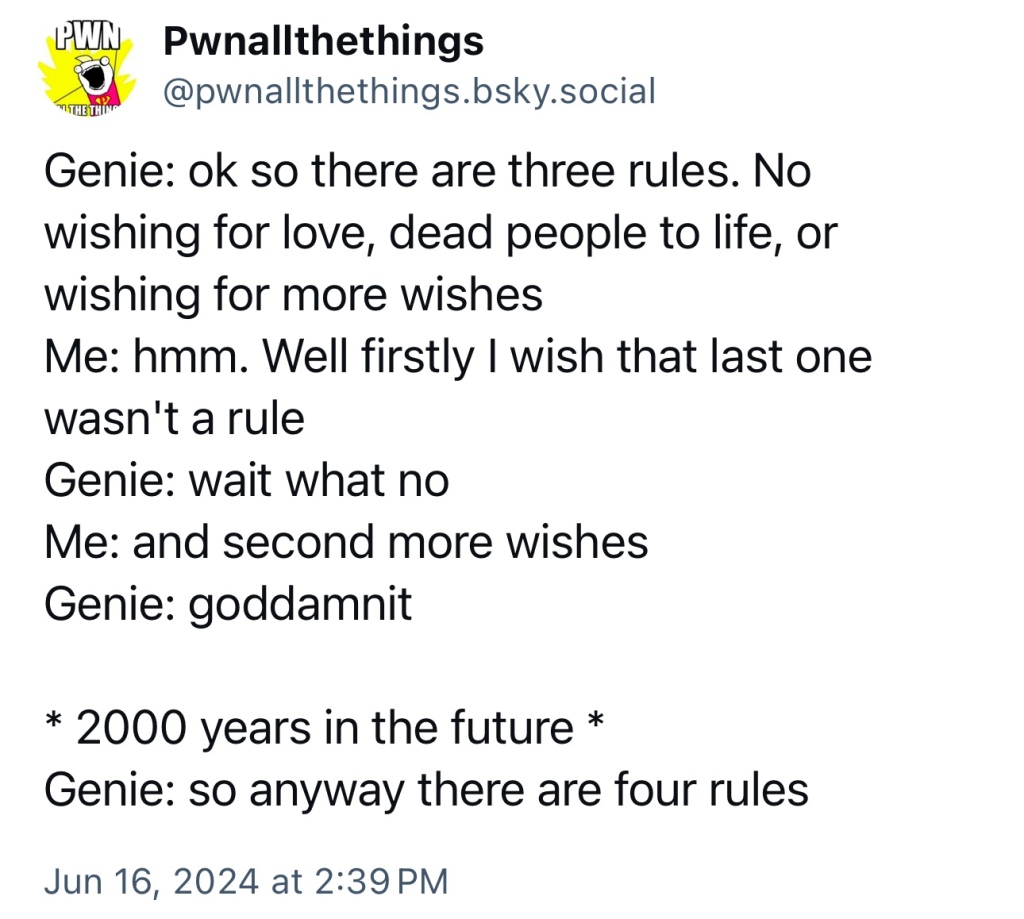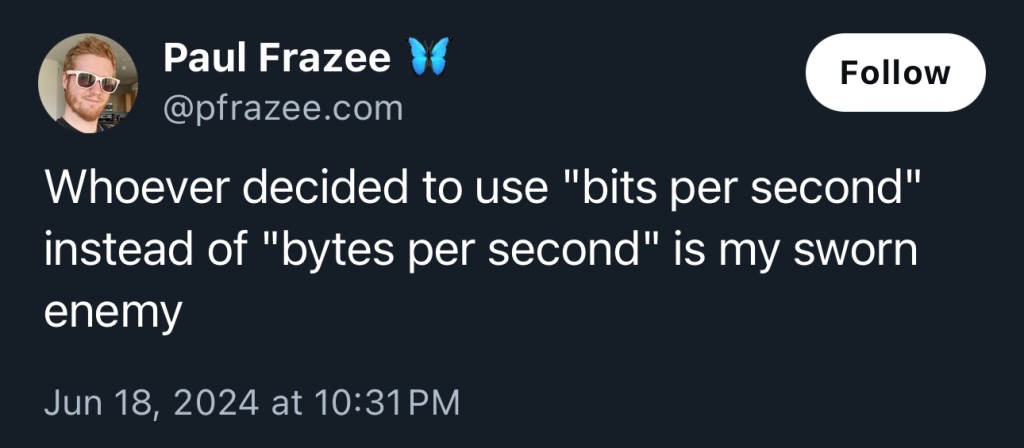June 17 – 23
These are my “weeknotes” to capture events, thoughts, and other items from the past week, mostly focused on work, but with some personal stuff thrown in.
[1] Let’s create a national training program for government digital services
This week I posted commentary on the GX Foundry site on the need for a standardized government digital services training program, offered nationally, to challenge governments to focus on fundamentals (human-centered design, iterative development, user research and user experience, etc.) before pursuing AI solutions to everything. The post was sparked by this meme:

I’m hoping, over time, I can convince colleagues at some of the think tanks and/or boutique consultancies to come together and make this real. We’ll see. Not sure I have enough time or energy to lead this charge myself.
[2] When digital service innovation gets real, emotions can run high
I am “workshopping” this section here for a potential post on our main GX Foundry website. I’m trying to figure out the best way to explain our goals for non-tech audiences working in local government agencies. Feedback welcome.
This week was a tough one on the frontier of our own digital service work: overhauling the public-facing website for our county and all her public services. Feelings were… shared.
As noted via our GX site and in other spaces, our big idea—taken from national examples—is to “flip the script” on our county’s various websites, changing them from being a constellation of agency-centric websites to being a unified citizen-services-centric destination. That is, we should meet the people we serve where they are (as much as we can) and not demand they learn the ins-and-outs of local government in order to access the services they want or need.
If we want to be citizen-centric and service-focused, it naturally follows that we will downplay agency names, downplay elected officials, and downplay government jargon of all kinds. We need to collapse all the standalone websites. We need to use plain language to present our services in ways that make sense to normal people. In this big pursuit, we envision ending up with 1 website with 1 root URL and 1 home page, not 40 home pages spread across 40 or more URLs.
For example…
If you need help getting enough to eat, today you can’t go to one website and find all your options. In fact, before you start, you need to think about whether you are a veteran, or over 65, or under 18—or any combination of those factors—before you start seeking services. Depending on your demographics, you might want to start from up to 4 different websites. (If you can figure that out.)
But to us, if you know you need food, why don’t you just show up at our (one) website and look for words and phrases that talk about “food assistance,” or use other words that make the most sense to you? We actually have several food-related services to offer:
- food assistance in the form of SNAP (a revised “food stamps” program)
- meals for seniors, whether mobile or home-bound
- information on local food pantries (that we don’t run, but we know about)
- dog food—yes, we offer limited assistance for dog owners in distress
Some programs offer discounts. Some are totally free. But they are all about addressing food insecurity issues for you and your family. So if you need food, look for food—don’t try to figure out which Agency to talk to.
Today, to access the help or info we offer, residents must know or figure out:
- the names of relevant county agencies
- the names of relevant program names or jargon
- what demographic categories they fall under, because that might mean they should go to a demographically-specific agency first (like a Veterans agency, or a seniors agency)
- how to call us or how to visit our offices in person, because a lot of services aren’t online yet
- whether there are any nonprofits in the area that could help

Maybe a Google search can point them in the right direction. Maybe not.
The problem…
We have these awesome services, provided by the best public servants you can imagine, but if you’re a resident that needs something, it’s your job to figure out our agencies and program names to get to the right place. That’s unfortunate if you’re looking for a marriage license or trying to register a new vehicle. But it could be really bad if you’re in distress—this approach can make a bad situation feel just a little worse.
Everyone working in our agencies is here to help! But right now our digital services are setup to reinforce agency boundaries, identities, and financial structures. None of which meets the public where they are.
Flipping the script feels like a threat
So we see the problem. We know unifying under a single site, with plain language that makes sense to normal people is the way to go. So everybody’s on board, right? Based on lots and lots of discussions and working sessions and shared research, we sure thought we were good to go. Nobody raised a red flag in the last 9 months.
Then this past week, despite all that preparation, I think people started to understand what we were proposing because they could see some draft home page wireframes and started to grapple with the information architecture (IA) in the form of menu structures. Suddenly the idea of grouping “Child Support” and “Children Services” under banner of “services for children” was a threat big enough to spark open arguments and back-channel calls to stop this madness and go back to using Agency identities to organize everything.
This was the first “open revolt” to hit the project. (Okay, that’s overstating it, but the change in tenor was palpable and caught us off guard.)
Not everyone was upset or confused. But it was clear our messages about the conceptual design of the “One Franklin County” project had not broken through until this moment.
Every resident, every day
So we’re going back to the drawing board—literally drawing—to develop some visuals and show what the future can look like and why it’s better for residents. The model below is too detailed for most folks, so we’ll do some simple web page wireframes, too.

Ultimately what we want to do here is, in fact, radical. It’s a complete re-thinking of how we serve the public online. It’s Service-focused but we will ensure Agencies get direct credit for all their hard work (“SNAP benefits brought to you by JFS”). It’s Resident-first, not Agency-first. That’s not a minor change. But it’s the right thing to do.
After all, Franklin County’s tagline of choice is “Every resident, every day” — it’s not “Every agency, every day.”

It’s gonna be awesome if we can get this off the ground. We just have to get the shared vision established (or re-established).
[3] Culture Code for GX

After last week’s Culture Code development session with our Delivery Services team, this week we did it with the GX Foundry team.
These have been really helpful in understanding the thinking and motivations of all our team members, and giving everyone express permission to help build our culture together. We already have a solid team and it’s a positive place to work overall. But digging a little deeper into how everyone wants to work together will hopefully reinforce the best parts of working here and improve the rest.
Our draft set of expectations are below. This one’s a lot longer than the last one, and a lot more wordy! But this team has been together, working as a unit under the “GX” banner, longer than our project management group, which may explain why these items are a lot more specific.

Once we work out any remaining kinks, I think we can post this to the main GX Foundry site, to share it with our followers. CODE PA did something similar earlier this year.
[4] “No wrong door” beats “one door”
There’s an initiative in one part of the county to develop a “one door” approach to organizing services, bringing together a variety of human-service agencies under one roof (virtual or otherwise) to make providing services faster, easier, and more comprehensive and supportive for residents. I’m 100% in support of this idea and this work!
However, when it comes to “doors,” I prefer this tidbit over on the CODE PA website…

This dovetails with our thinking on the One Franklin County digital services overhaul: that we meet people where they are, and we don’t treat Residents as if they are “wrong” if they come in a “door” we didn’t intend for them to use. If they made it here, let’s work on getting them the services they need (and deserve).
This matters because the “one door” initiative—while laudable and innovative and deserving of more support from everyone—only covers about 13 or maybe 16 agencies… out of more than 40. So it’s one door for maybe 16 agencies, but there are still 24 or more doors out there. So yeah, keep going, friends! But let’s keep all our doors open.
[5] Miscellanea
- Just wanna say… Canva really is remarkable, at least to this old dog (who ran Aldus PageMaker from 3.5″ floppies on a Macintosh SE). What you can do in a web browser today is nothing short of stunning.
- We finished up Project Manager candidate intro calls this week. We’re taking 8 candidates through first round interviews over the next couple weeks. Hiring is still out in August.
- Worked with the Project Management team on a project description / summary exercise this week which was illuminating, even though we only got through a couple items. My realizations:
- There are projects on our books today that we don’t really understand, and even the teams requesting the work don’t understand! These projects are destined for big trouble because things are not spelled out with enough detail, nor are they explainable in plain language at a high level. So… how do you know if you’re doing the right work in the right ways for the right outcomes?
- This sparked an old idea… If you cannot explain the What, How, and Why of your project in simple terms—that any reasonably-intelligent business person can understand immediately—then you don’t really understand the project, and you can’t lead it.
[6] Internet funnies
A roundup of stuff that made me chuckle this week.









Discover more from Digital Polity
Subscribe to get the latest posts to your email.